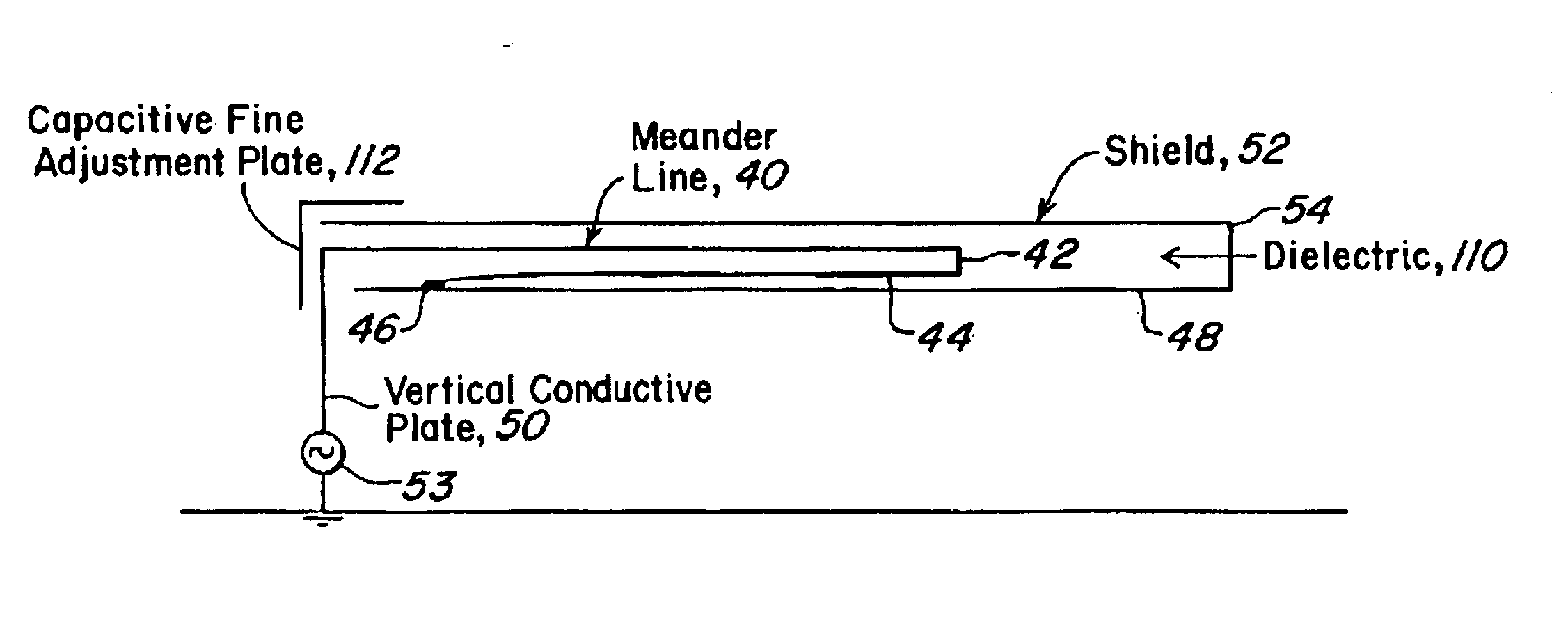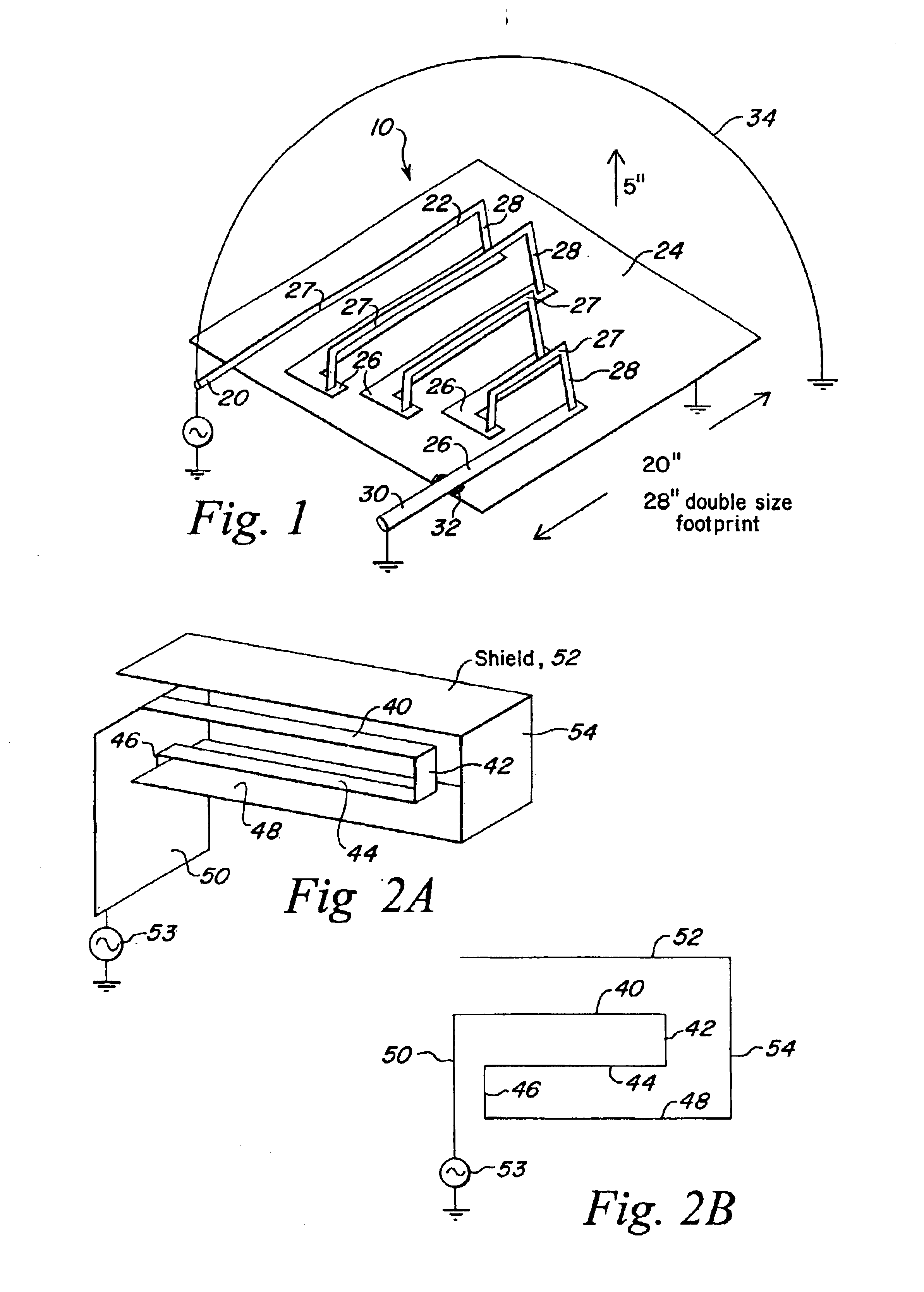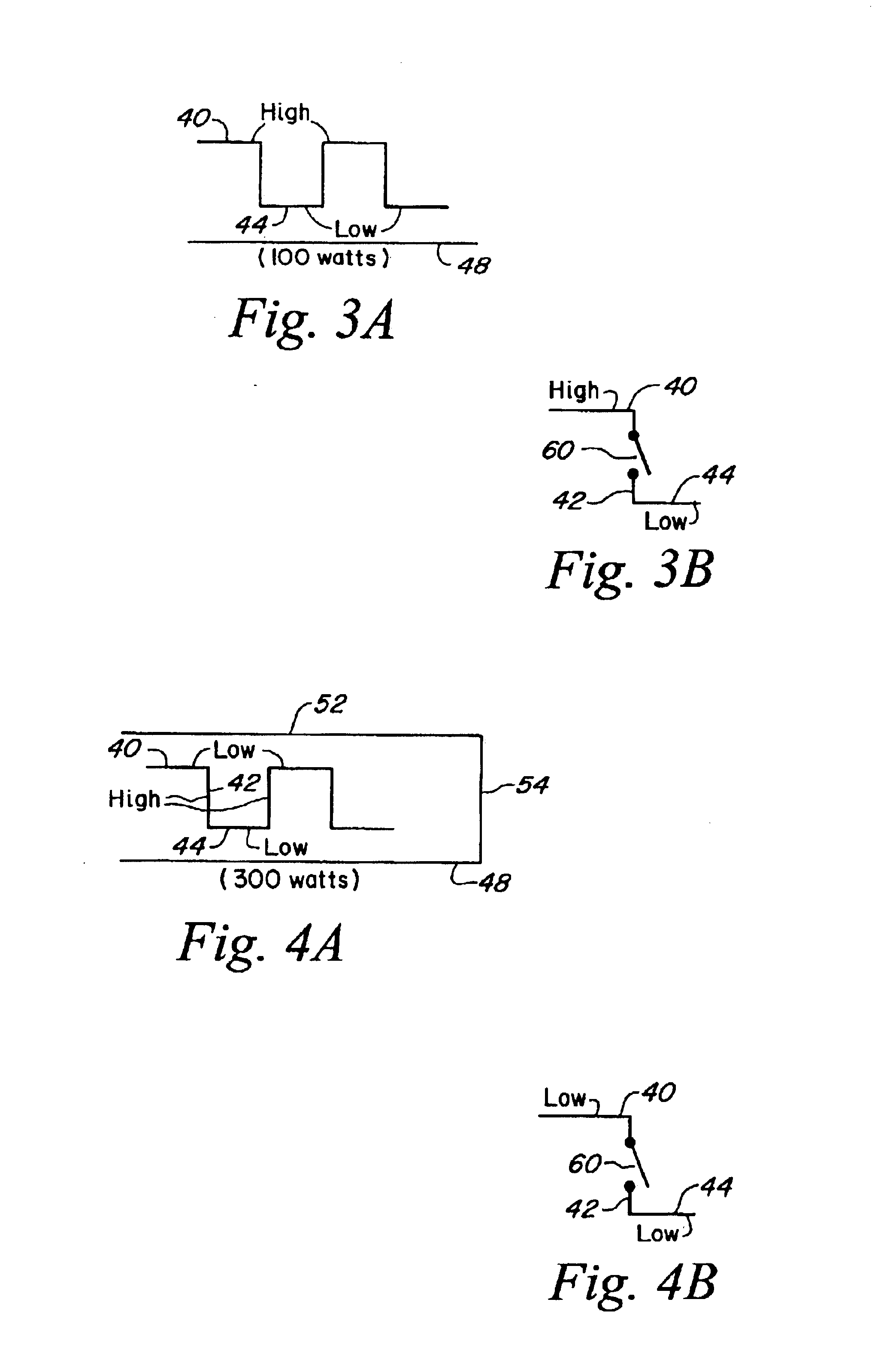Symmetric, shielded slow wave meander line
a shielded, slow wave technology, applied in the direction of antenna details, antennas, electric long antennas, etc., can solve the problems of more phase shifts per unit length and delay per unit length, and achieve the effects of lowering the resonant frequency of narrow band antennas, lowering the low frequency cutoff limit, and increasing the delay per unit length
- Summary
- Abstract
- Description
- Claims
- Application Information
AI Technical Summary
Benefits of technology
Problems solved by technology
Method used
Image
Examples
Embodiment Construction
[0044]Referring now to FIG. 1 and as described in U.S. Pat. No. 6,313,716, a slow wave meander line structure 10 is in the form of a folded transmission line 22 mounted on a plate 24. Plate 24 is a conductive plate, with transmission line 22 being optionally constructed from a folded microstrip line that includes alternating sections 26 and 27 which are mounted close to and separated from plate 24, respectively. This variation in height from plate 24 of alternating sections 26 and 27 gives these sections alternating impedance levels with respective to plate 24.
[0045]Sections 26, which are located close to plate 24 to form a lower characteristic impedance are electrically insulated from plate 24 by any suitable means such as an insulating material positioned therebetween. Sections 27 are located at pre-determined distance from plate 24, which predetermined distance determines the characteristic impedance of transmission line section 27 in conjunction with the other physical character...
PUM
 Login to View More
Login to View More Abstract
Description
Claims
Application Information
 Login to View More
Login to View More - R&D
- Intellectual Property
- Life Sciences
- Materials
- Tech Scout
- Unparalleled Data Quality
- Higher Quality Content
- 60% Fewer Hallucinations
Browse by: Latest US Patents, China's latest patents, Technical Efficacy Thesaurus, Application Domain, Technology Topic, Popular Technical Reports.
© 2025 PatSnap. All rights reserved.Legal|Privacy policy|Modern Slavery Act Transparency Statement|Sitemap|About US| Contact US: help@patsnap.com



